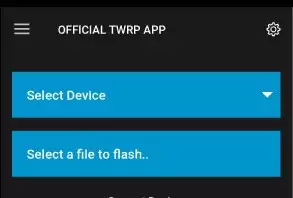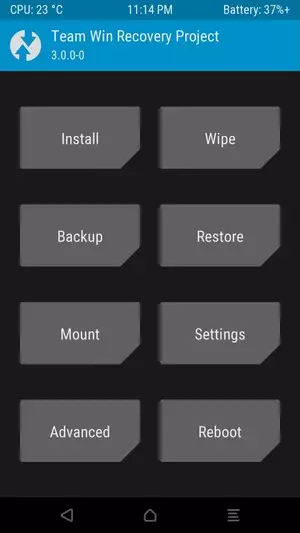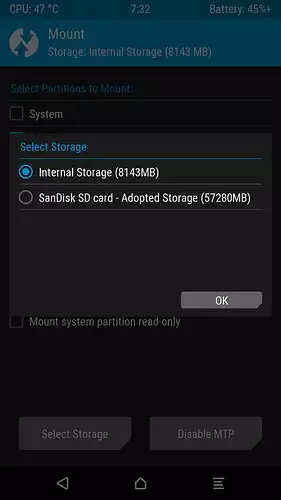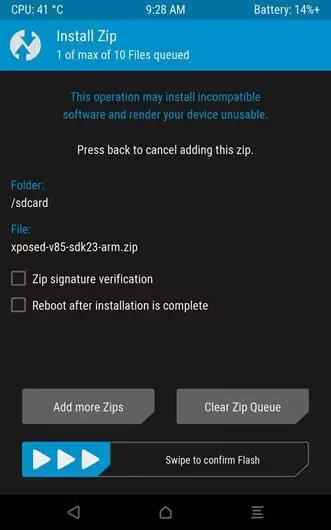Flash firmware on BLU Studio J8 LTE
Mobiles >> BLU >> BLU Studio J8 LTE| Specifications | Reviews | Secret codes |
| Unlock phone | Root phone |
| Backup | Flash Firmware | Screenshot |
| Hard Reset |
How to flash BLU Studio J8 LTE?
Why reinstall the firmware?
Errors periodically appear in the Android operating system.
Apps won't open.
Many programs from the Play Market do not work.
The phone turns off for no apparent reason.
The phone began to work slowly.
You have decided to try a different version of Android.
Where can I find the firmware?
On the website of your phone manufacturer.
On sites where developers post custom or official OS.
What should be done before installing the firmware?
Back up your contacts and user data and transfer it to your computer.
Insert your SD card into your phone. It must have enough memory to fit the firmware.
Find out the exact model of your smartphone.
Fully charge your device. If the battery runs out during the firmware, the device will no longer turn on.
Download archive with Firmware. Place it on the SD card.
Installing TWRP Recovery
Download the Official TWRP App to your phone from the Play Market. And install this app.
When you start the application for the first time, you must agree to install a new firmware and all the risks associated with this, as well as agree to grant the application Superuser rights and click the 'OK' button.
On the next screen, you need to select the 'TWRP FLASH' item and give the application root-rights.

On the main screen of the application, click on the 'Select Device' drop-down list, and select your phone model.
After selecting the phone, the program will redirect the user to a web page to download the corresponding image file of the modified recovery environment. Download the proposed *.img file.
After downloading the image file, return to the main screen of the Official TWRP App and press the 'Select a file to flash' button. Select the file downloaded in the previous step.
Press the 'FLASH TO RECOVERY' button and confirm your choice, press 'OK'.
When the message 'Flash Completed Succsessfuly!' appears on the screen. Click the 'OK' button. The TWRP installation procedure is now complete.
Write the firmware to the SD card. Using a PC or laptop card reader.
Insert a SD memory card into the phone.
To reboot into recovery, you need to use a special item in the Official TWRP App menu, accessible by pressing the button with three stripes in the upper left corner of the main screen of the application. Open the menu and select the 'Reboot' item, and then click on the 'REBOOT RECOVERY' button.
Firmware via TWRP

Before flashing, it is recommended to clear the 'Cache' and 'Data' sections. This will delete all user data from the device, but avoid a wide range of software errors and other problems. You must press 'WIPE' on the main screen.
Press the 'Install' button to start the flashing.

On the file selection screen, at the very top there is a 'Storage' button for selecting an SD card.
Select the location where the files were copied. Press the 'OK' button.

Find the file we need and click on it. A screen opens with a warning about possible negative consequences, you need to check the item 'Zip signature verification', which will avoid using corrupted files when writing to the phone's memory sections.
The procedure for writing files to the phone's memory will begin, accompanied by logging and filling in the progress bar.
After completing the installation procedure, a 'Successful' message appears on the screen.
Summary: Smart Phone OS: Android 7.0 (Nougat); Chipset: Mediatek MT6737; CPU: Quad-core 1.3 GHz Cortex-A53; GPU: Mali-T720; Type: IPS LCD capacitive touchscreen, 16M colors; Screen Size: 5.5 inches (~69.0% screen-to-body ratio); Resolution: 720 x 1280 pixels (~267 ppi pixel density); Multitouch: Yes; Main Camera: 8 MP, LED flash; Features: Geo-tagging, touch focus, face detection; Video: 1080p@30fps; Front Camera: 5 MP, LED flash; Card slot: microSD, up to 64 GB; Internal: 8 GB, 1 GB RAM or 16 GB, 2 GB RAM; Alert types: Vibration; MP3, WAV ringtones; Loudspeaker: Yes; 3.5mm jack: Yes; WLAN: Wi-Fi 802.11 b/g/n, Wi-Fi Direct, hotspot; Bluetooth: 4.1, A2DP, LE; GPS: Yes, with A-GPS; ...
Comments, questions and answers on the flash firmware BLU Studio J8 LTE
Ask a question about BLU Studio J8 LTE




